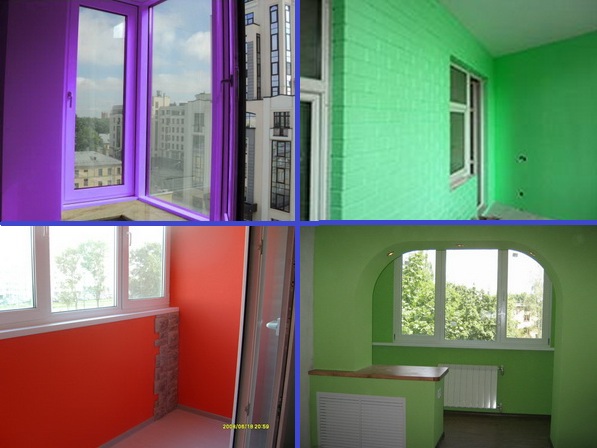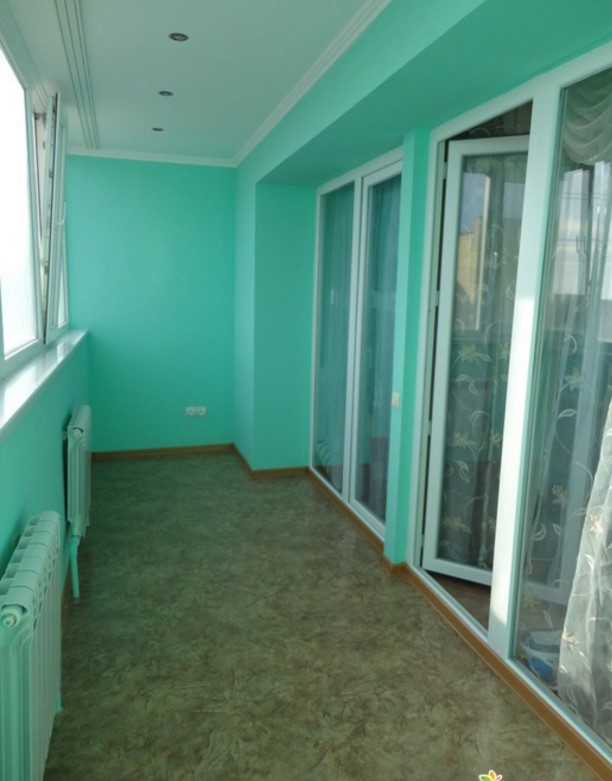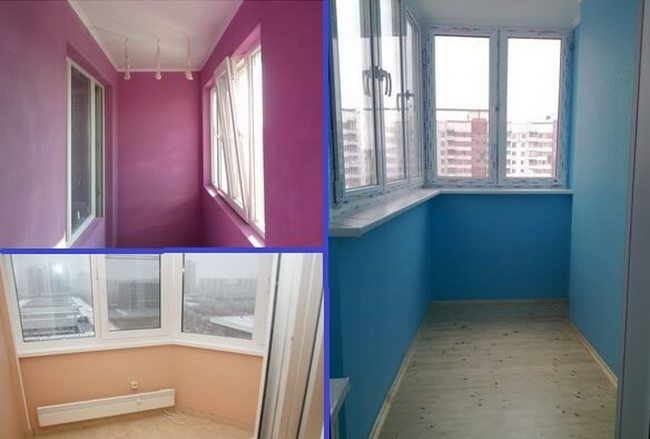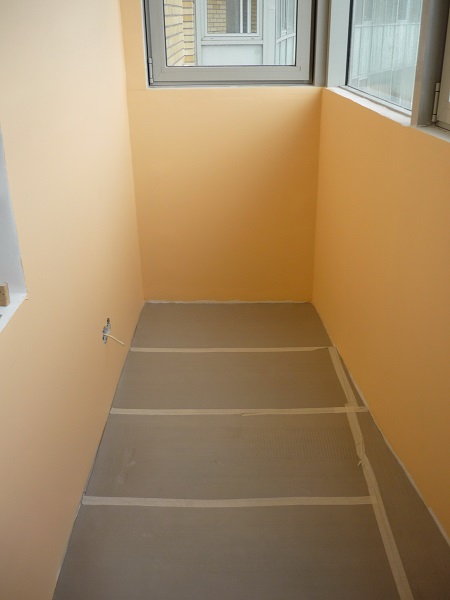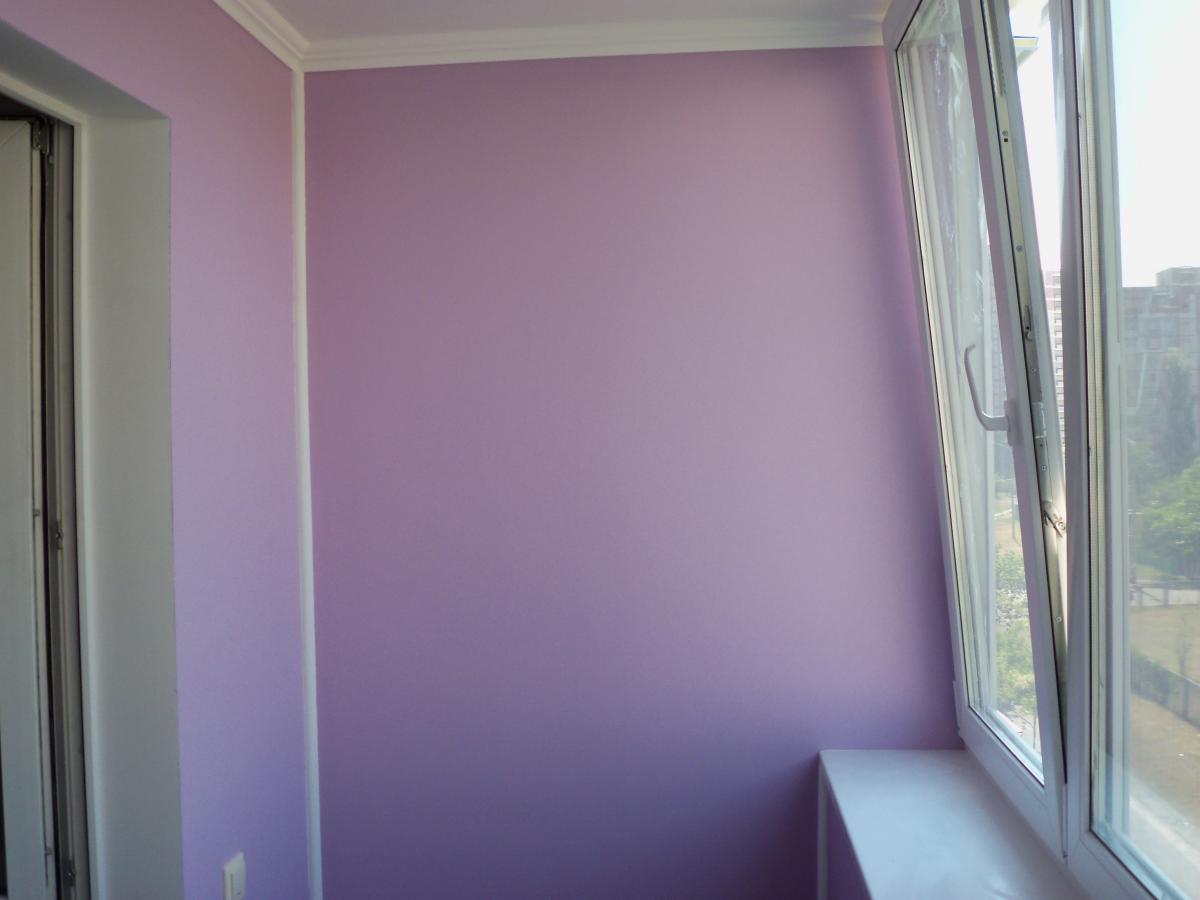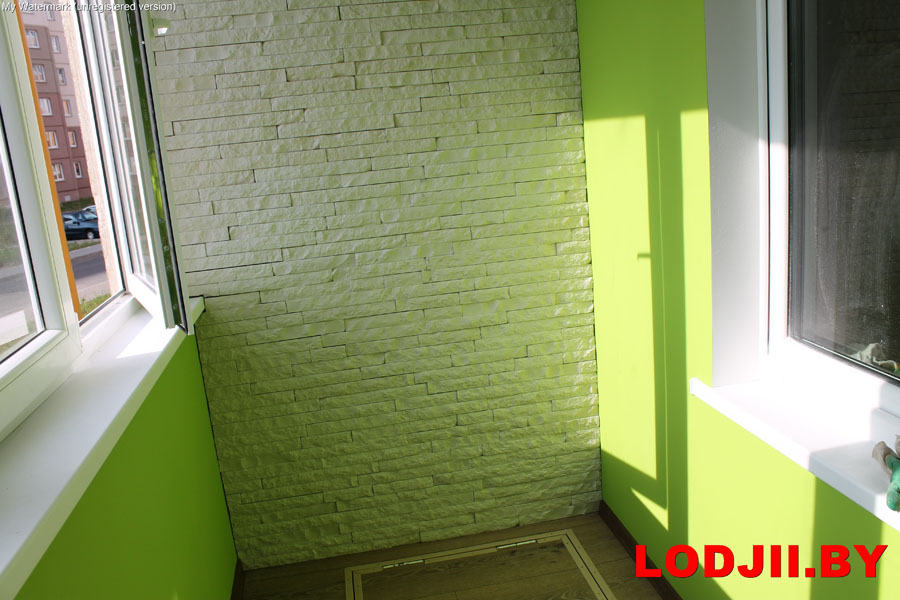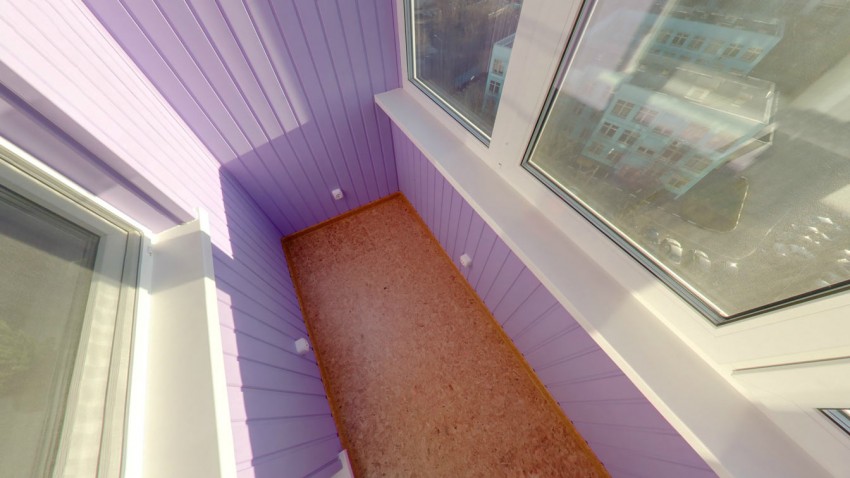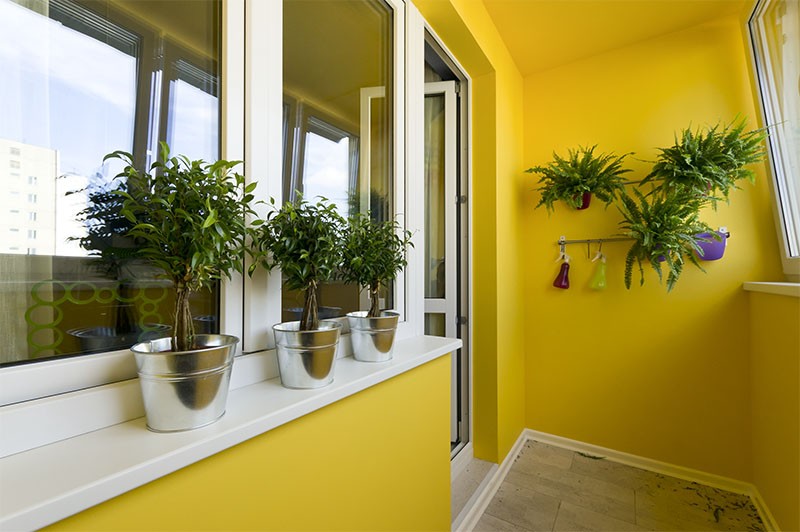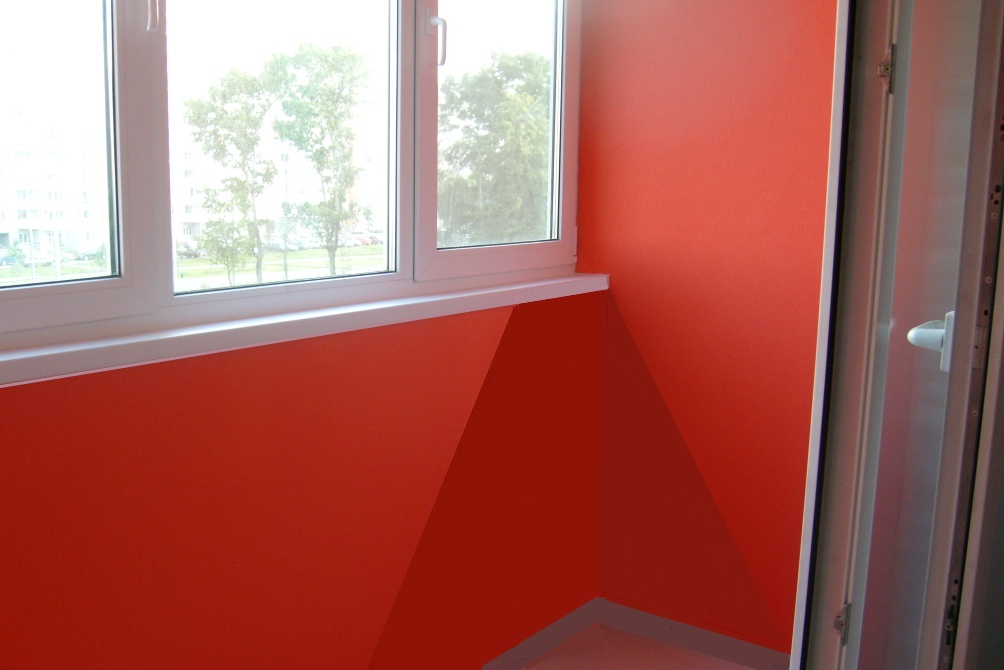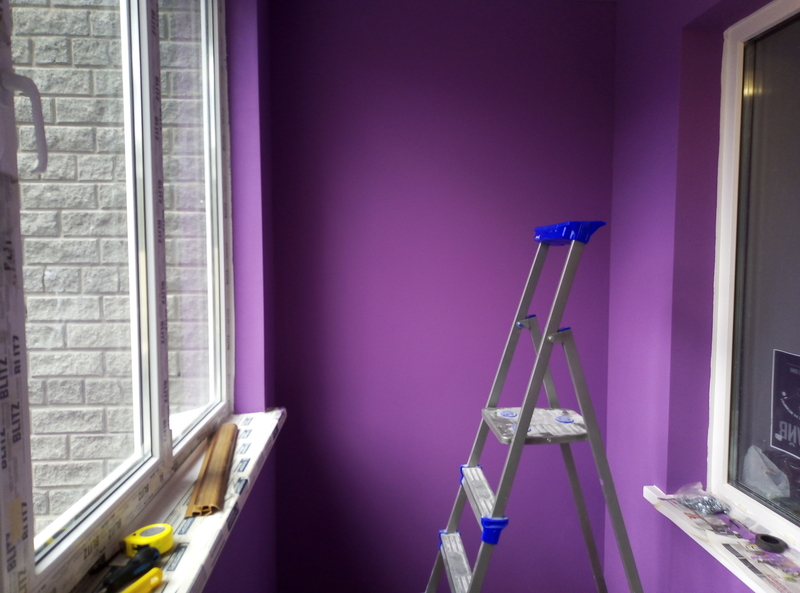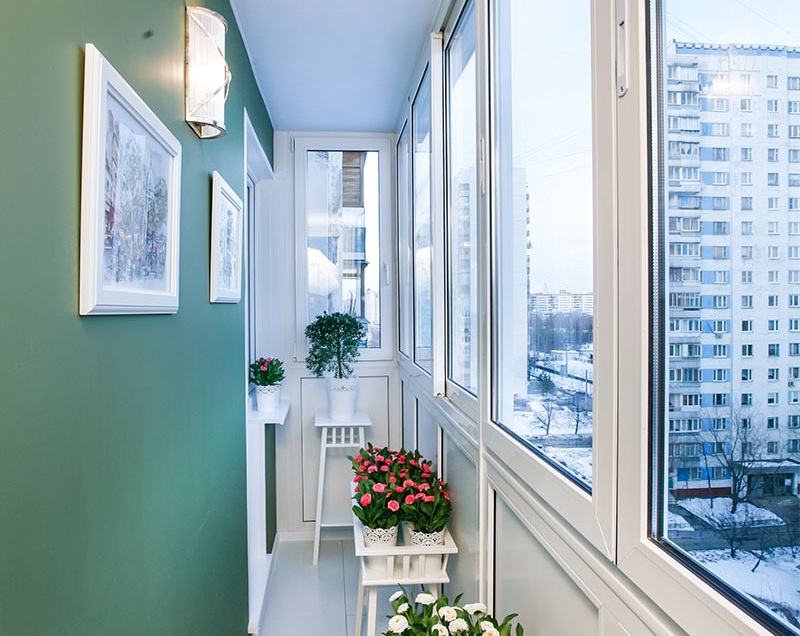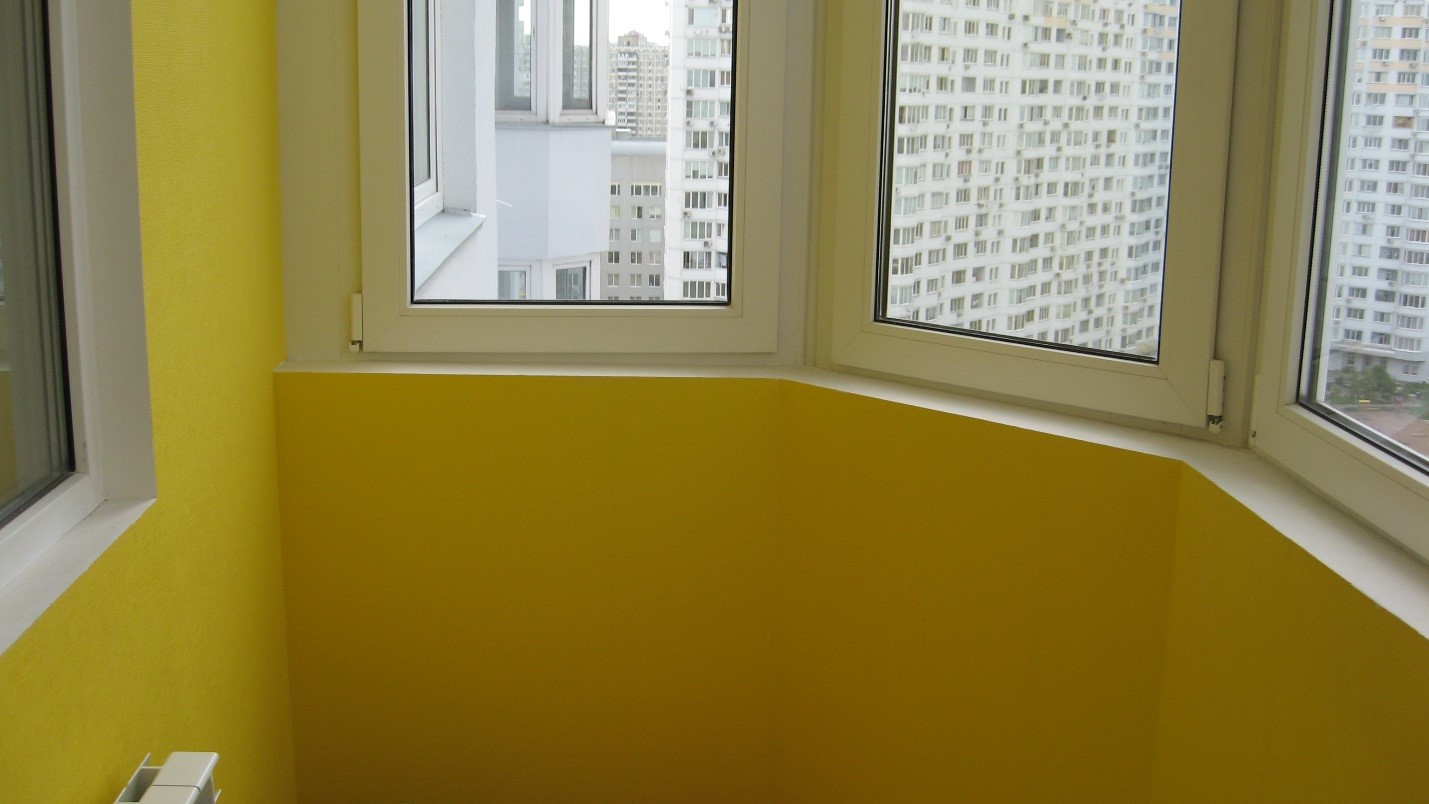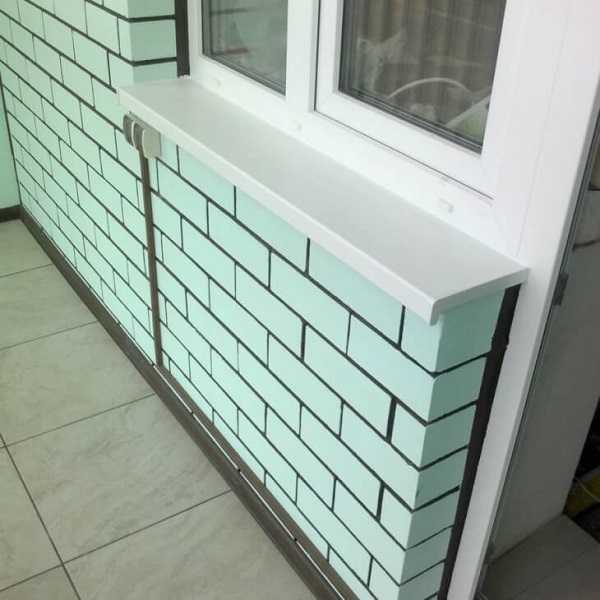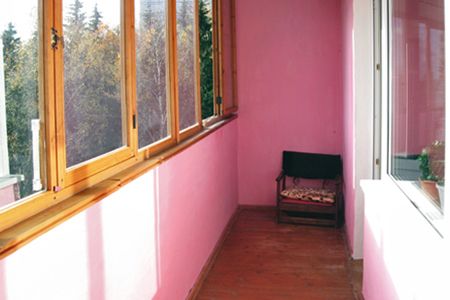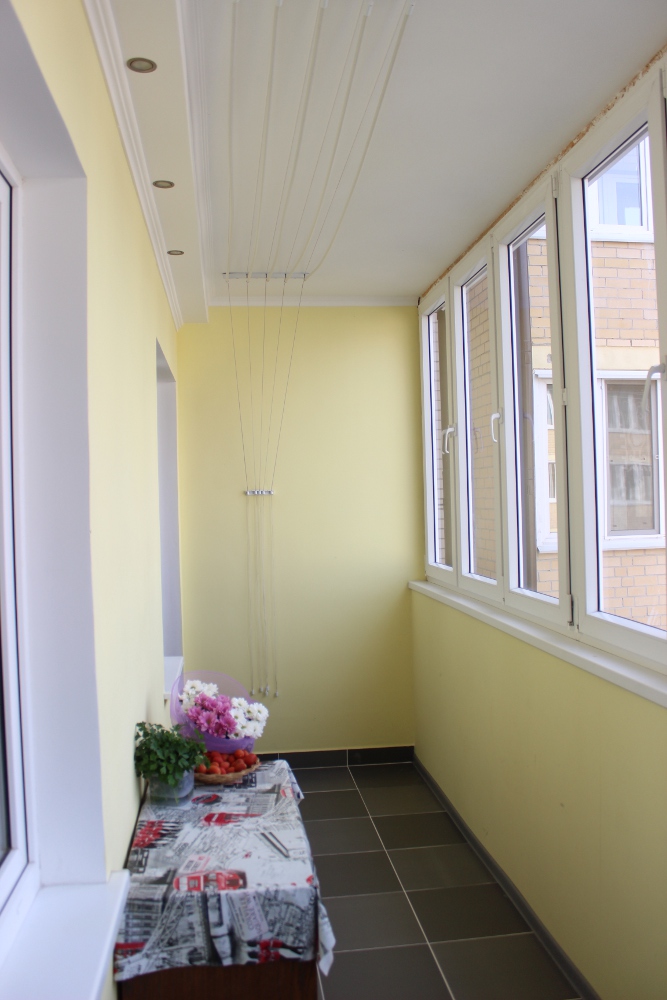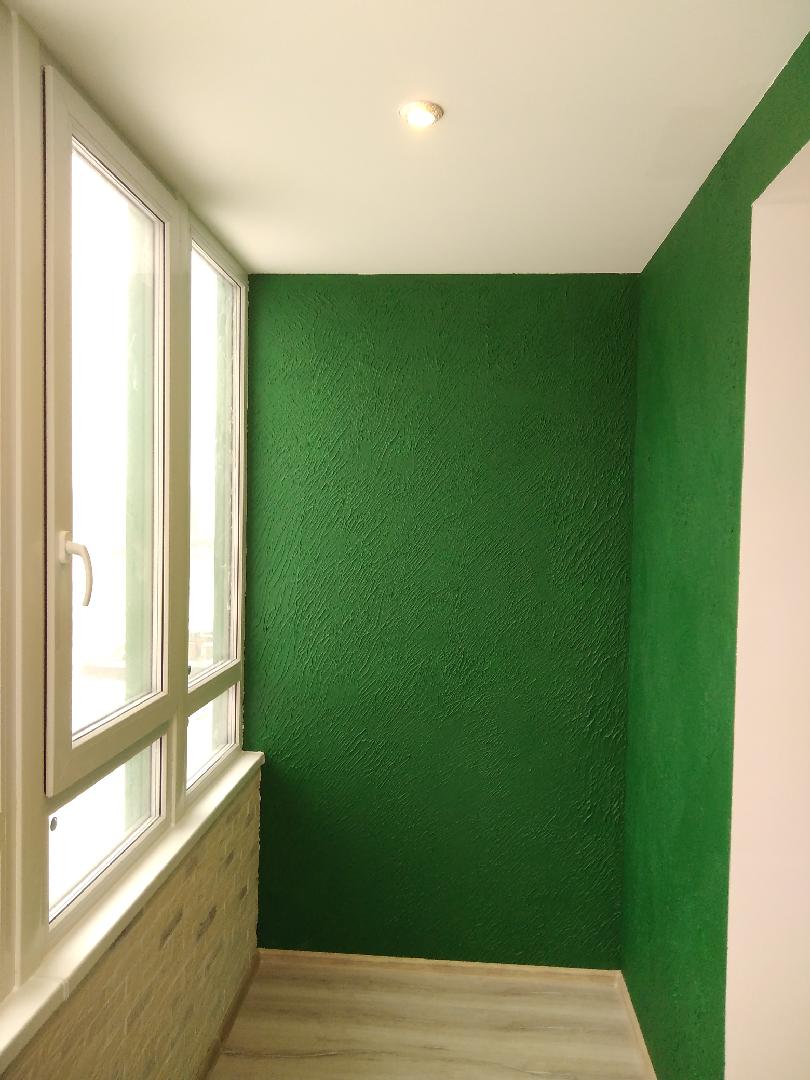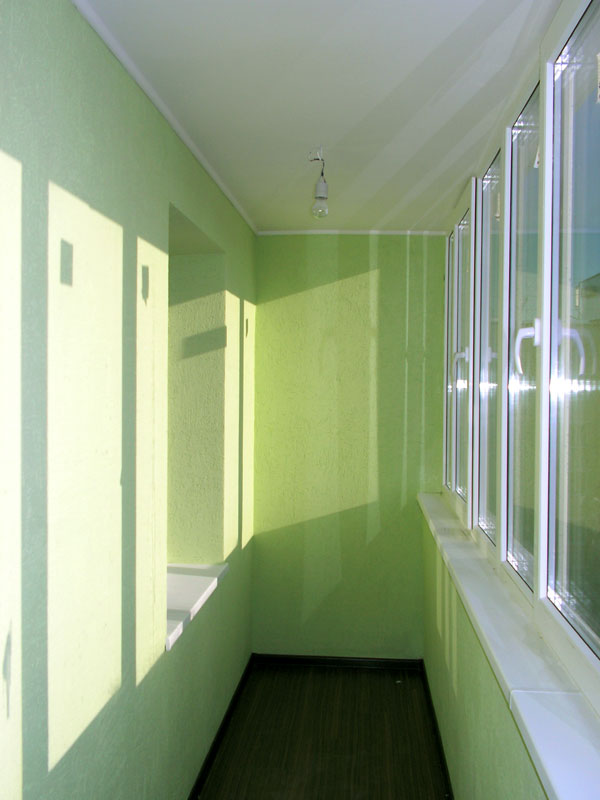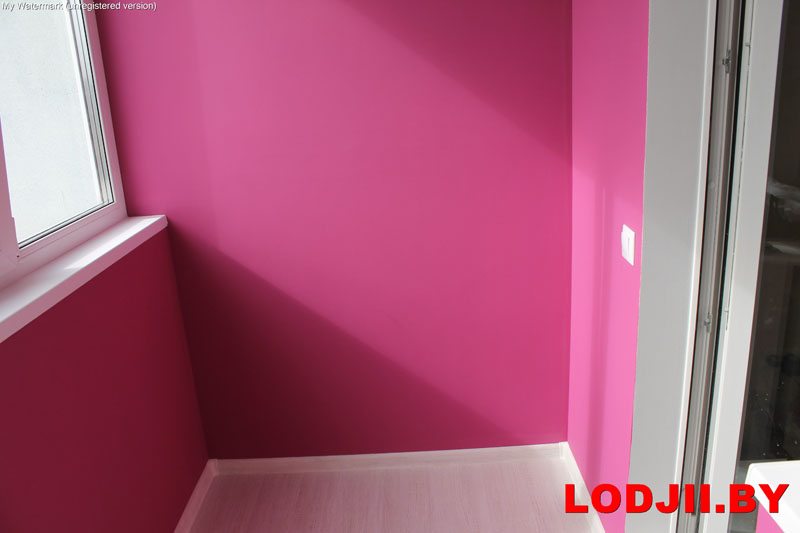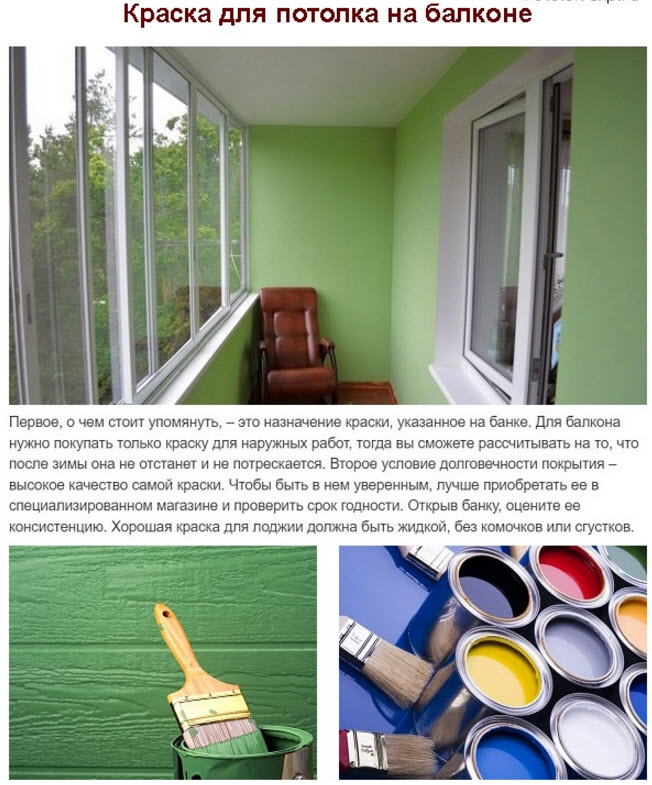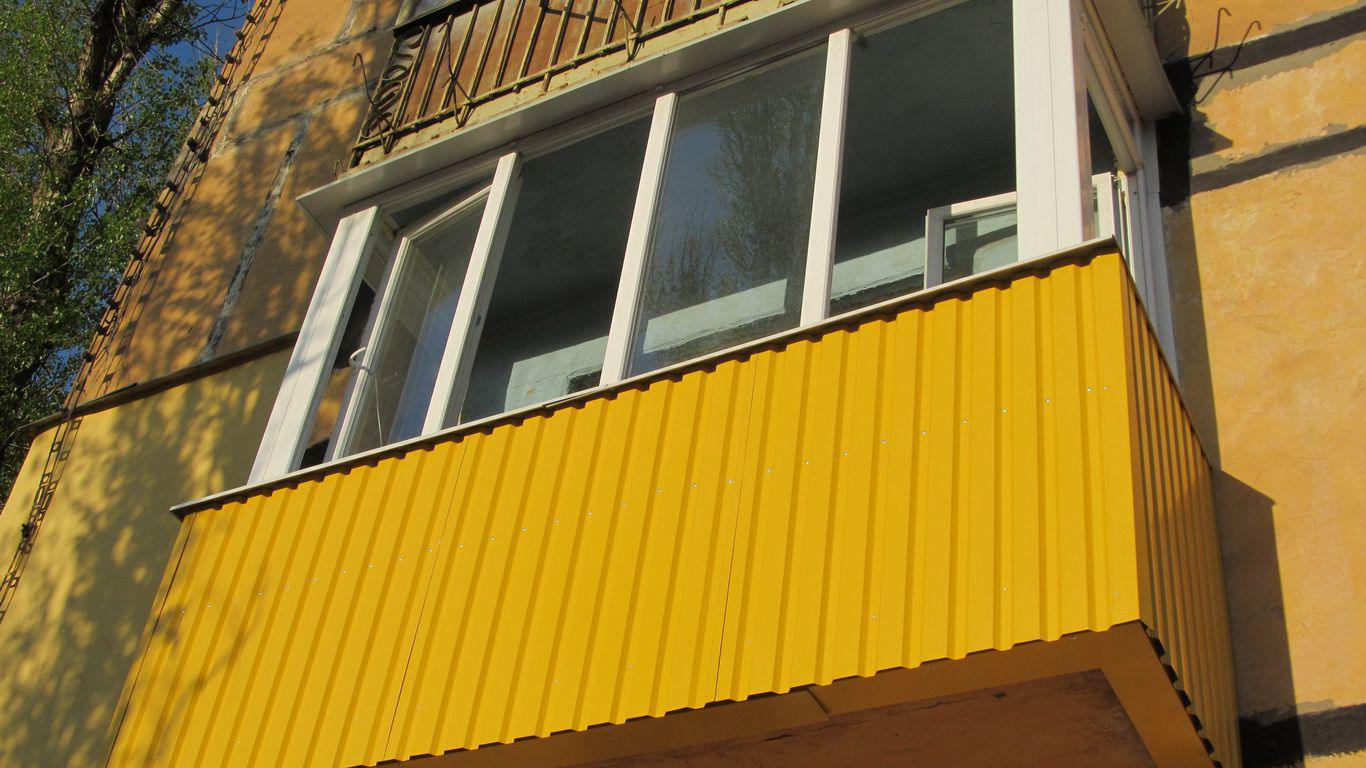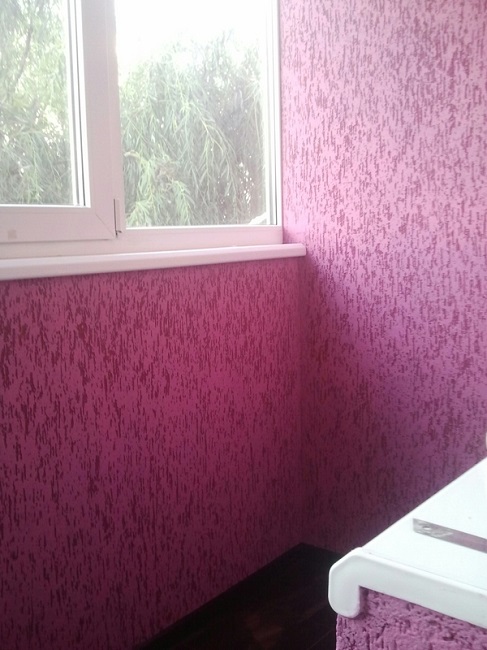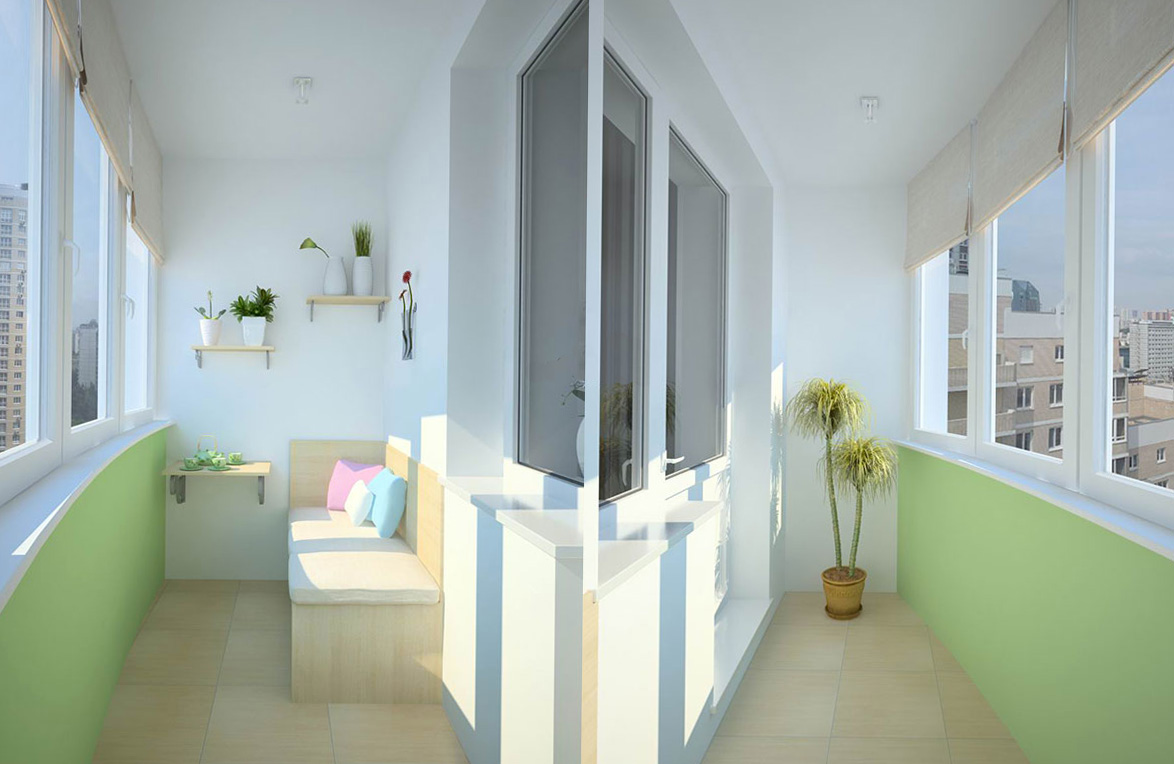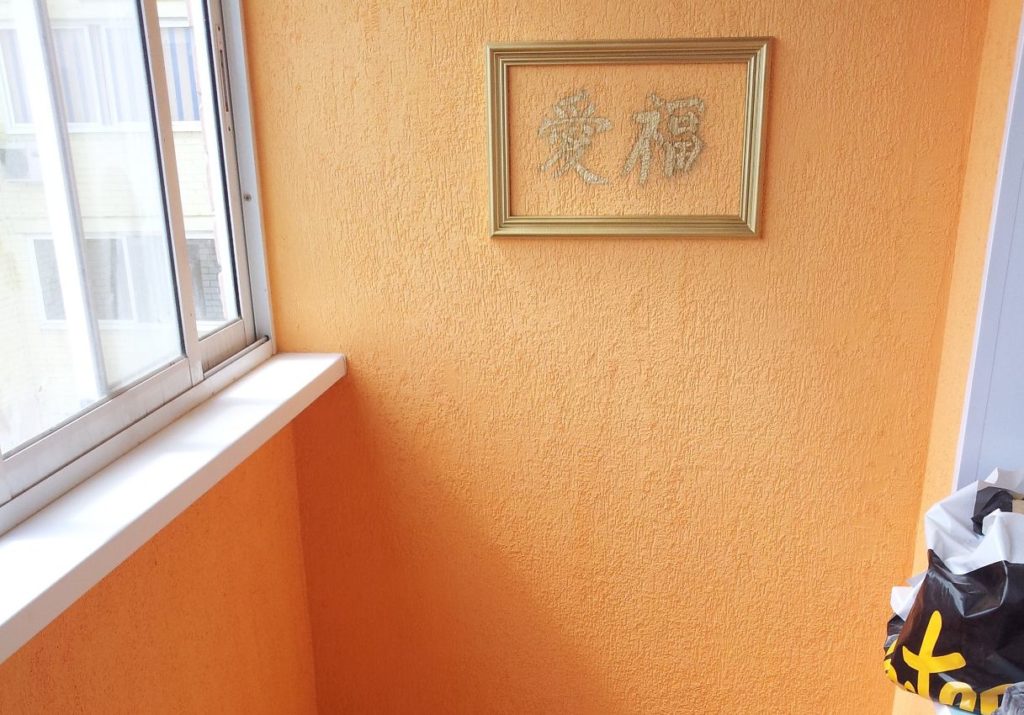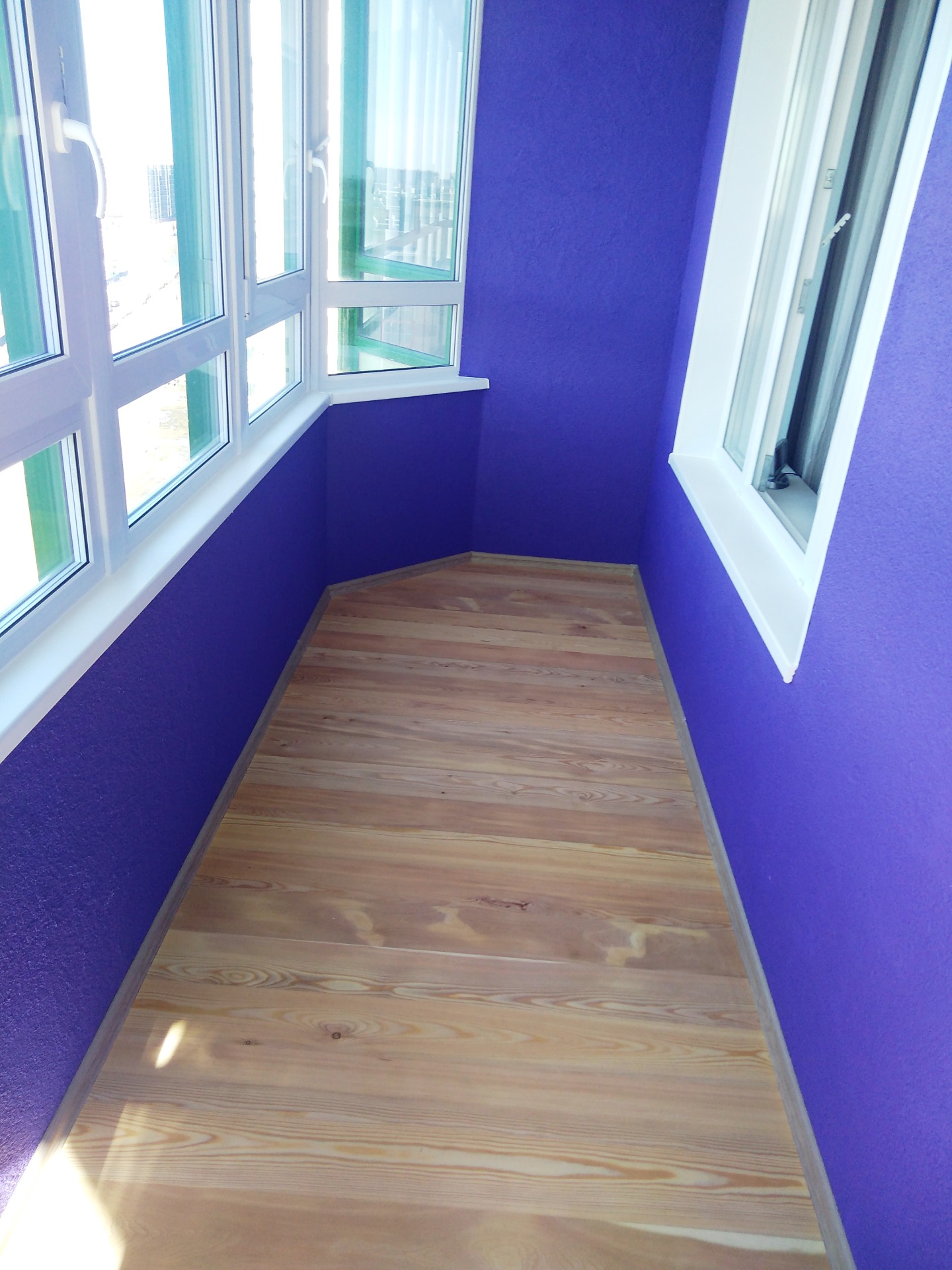How to prepare walls on a balcony for painting
First of all, you need to prepare the wall for painting. The wall preparation process consists of two stages: putty and primer. During puttying, we level the wall and eliminate any of its imperfections: be it holes or cracks. It is advisable to apply two layers of putty mixture: starting and finishing. During the application of the first layer, the wall is deprived of the most obvious shortcomings and shortcomings: with the help of the finishing putty, the wall is brought into perfect condition, ready for further processing. Do you think that after the putty, you can immediately start painting? No! There is also a second stage - priming the wall. Simply put, the primer improves the adhesion of the material to the surface: or, scientifically, it improves its adhesion. In addition, there are certain thick primers that can also serve as surface leveling.

Preparing the balcony for painting is an important stage, which will determine how firmly and evenly the paint will lie.
In addition to improving adhesion, the primer is able to protect the wall from various mold and mildew: that is, it performs protective functions. Over time, the appearance of various kinds of shortcomings may be just because the correct preparation of the wall was not carried out: therefore, this process is very important.
The choice of paint for finishing work
Among the huge assortment of paints and varnishes on the building materials market, it will not be difficult to choose a shade that suits the intended design. In order for the finish to please the eye, serve for a long time and not warp in the special microclimate of the balcony, it must meet the following standards:
- Resistance to alkali - the composition of the mortar contains components that destroy the coating, especially if the masonry is fresh.
- Water resistance - even on a glazed balcony, the humidity level is always higher than in the apartment itself.
- The paint must be resistant to moisture and temperature extremes: brick walls warm up well in the sun, a rapid decrease in temperature (for example, due to a thunderstorm or snowstorm) can lead to warping of the coating.
- UV resistance - correctly selected paint will not fade in the sun.
- High adhesion - the quality of adhesion of paint to brickwork depends on this parameter.
- Vapor permeability - the coating should not serve as an obstacle to air exchange.
- Features of care - a wall painted with wear-resistant paint can be easily cleaned of dirt with a damp cloth and detergents.
Brick wall paint colors
Silicone, silicate, acrylic paints meet these requirements.
Each of them has its own characteristics, which are important to consider in work. Consider the advantages and disadvantages of popular paints:
- Acrylic - they are highly elastic and waterproof, prevent the appearance of salt stains, but their vapor permeability indicators leave much to be desired.
- Silicate - paints based on potash glass will ensure proper air exchange, but due to their high density, they are difficult to apply, poorly paint over seams and cracks.
- Silicone - good air permeability, prevent moisture, very elastic (easily mask two-, three-millimeter cracks), have a dirt-repellent effect. It can even be used in newly built buildings with fresh masonry. The disadvantage is the high cost.
Advice
If the balcony is open or on the sunny side, choose facade paints with lightfast pigments for the walls - they are the most resistant to wear and tear. It is not recommended to use them indoors due to the release of unsafe volatile substances.
How to paint a wall on a balcony: step by step instructions
After the painful and long preparation of the wall, the moment comes for which all this was done - painting the wall. The very process of painting on the balcony is no different from exactly the same action for another room: the only differences are in the choice of paint that suits you. It is best to use a roller: this tool can be used to quickly paint large surfaces. "But what about the corners?" - you ask. Everything is very simple: you can use brushes for hard-to-reach places; they are sold in specialized stores at an affordable price.
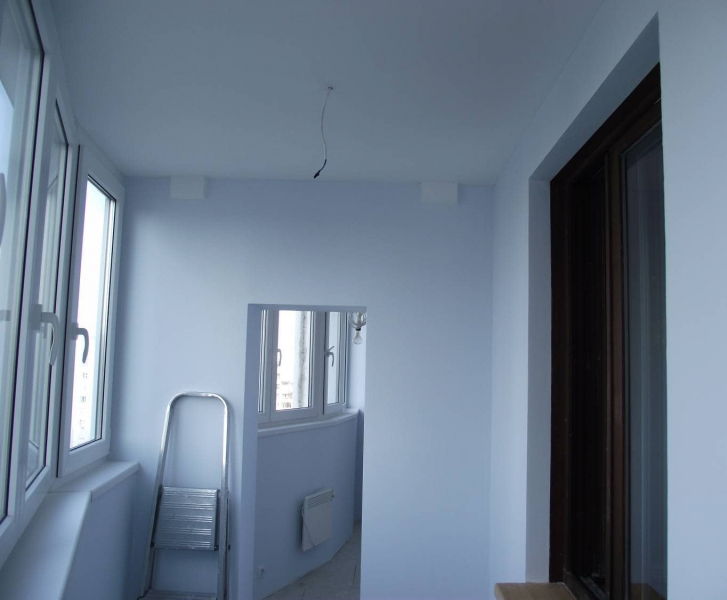
When puttingtying and priming the walls of the balcony, it is necessary to carefully level the surfaces and eliminate all its shortcomings.
During the process itself, it is imperative to stir the paint mixture: then the paint on the wall will look more even and, accordingly, the outcome of your repair will be better.
How to paint a balcony or loggia
The first thing worth mentioning is the purpose of the paint indicated on the can. For the balcony, you only need to buy paint for outdoor work, then you can count on the fact that after winter it will not lag behind and will not crack. The second condition for the durability of the coating is the high quality of the paint itself. To be sure of it, it is better to purchase it in a specialized store and check the expiration date. After opening the jar, evaluate its consistency. Good paint for a loggia should be liquid, without lumps or clots.
Loggia project using paint for decoration
Types of paints and varnishes
On cans of paint, it is indicated for which materials it is intended. You can buy specialized paints and varnishes or all-purpose ones. Acrylic - one of the most popular, there are other options (alkyd varnishes and paints, silicone, polyurethane, etc.). Oil paints can also be used, but they have a number of disadvantages. Under them, the material does not breathe and, accordingly, breaks down faster. In comparison, for example, with acrylic, they retain their color worse and, moreover, take longer to dry.
Choosing paint for repair
Of course, in order to choose the right varnish or paint for the balcony, you need to take into account the surface material on which it will be applied. For concrete and brick, this is paint, for metal and plastic, varnishes are preferable. As for the lining, a lot depends on where it is used. For exterior decoration, it is better to choose paint, and for interior decoration, acrylic aqualak is perfect.
Color matching
Each person has their own favorite colors, but when choosing a shade, it is worth considering some points related to the location of the balcony. It is well known that light colors reflect light, and dark colors absorb, and it is not for nothing that white color has long become traditional for frames. Therefore, for balconies located on the north side of the house or just in the shade, it would be more correct to choose a light and warm shade. On the sunny side, using bright, saturated colors is not the best option, but remember that surfaces that are too dark get hotter. Because of this, it can be hot and stuffy on a balcony, especially a glazed one, and if the balcony is finished with plastic, then such heating can harm this material. Cool shades of blue, green, etc. are a good option here.
Bright colors in the design of the balcony
Preparatory operations
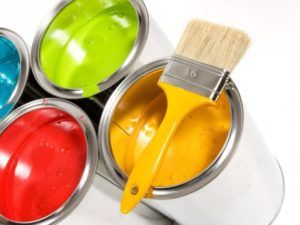 For outdoor use, choose a paint that is resistant to temperature extremes and light exposure.
For outdoor use, choose a paint that is resistant to temperature extremes and light exposure.
Before you start painting a balcony, you need to go through two phases of preparation - theoretical and practical.
The theory consists in determining the conditions, choosing suitable formulations for application, which give a good result of maintaining their characteristics during long-term service.
Practical training is reduced to the preparation of surfaces on which the selected material is applied.The paint and varnish composition for the wall on the open-type balcony must be for outdoor use (waterproof, frost-resistant).
Surface treatment
 Types of facade paints
Types of facade paints
There are a lot of different paint compositions on sale, but to determine how to paint the balcony, they start with the materials on which they will be applied:
At the beginning, the area to be painted is cleaned as best as possible of dust, rust, old building compounds. For this purpose, the entire available set of tools is used: a rotary soft brush installed in a drill, a scraper, a hand-held metal brush, and sandpaper. Solvents and alcohols are used on metal surfaces.
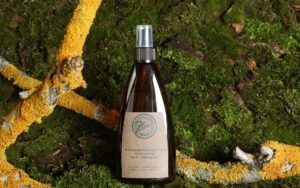 From fungus and mold, be sure to process
From fungus and mold, be sure to process
If the materials are affected by fungus, mold, they are treated with antibacterial impregnations. The moss is etched with an alkali solution.
The next operation is leveling (putty, primer). Sinks in concrete are not putty, but are rubbed with cement mortar. The tree is treated with protective impregnations.
In some cases, it is advisable to disassemble the wall cladding, clean and paint its parts separately, and then reassemble. Then it will retain the relief of the borders, it will not look like it has been doused from a bucket (for example, a wooden lining).
Application on old paints
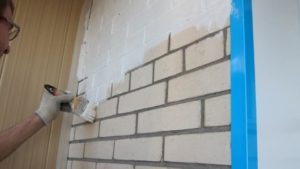 It often happens that the choice comes down to what color to paint the balcony in to freshen up the atmosphere. It is not always necessary to completely remove old layers, but you need to choose a new paint that is chemically compatible with the base.
It often happens that the choice comes down to what color to paint the balcony in to freshen up the atmosphere. It is not always necessary to completely remove old layers, but you need to choose a new paint that is chemically compatible with the base.
So that even a minor innovation does not spoil everything, at the preparatory stage, a product brand is selected:
| Dye | old | |||||||
|---|---|---|---|---|---|---|---|---|
| new | XB | NS | AK | Vododesp | Silicate | MA | PF | HP |
| pre-chlorovinyl IV | Yes | No | No | Yes | No | Yes | Yes | Yes |
| organic cream KO | Yes | Yes | No | No | No | Yes | Yes | No |
| acrylic AK | Yes | Yes | Yes | Yes | No | Yes | Yes | Yes |
| water dispersible | Yes | No | Yes | Yes | No | Yes | Yes | No |
| silicate | No | No | No | No | Yes | No | No | No |
| oil MA | Yes | No | Yes | Yes | No | Yes | Yes | No |
| pentaphthalic PF | Yes | Yes | Yes | Yes | No | Yes | Yes | Yes |
| chlorosulfonated polyethylene HP | Yes | Yes | Yes | No | No | Yes | Yes | Yes |
Solvents are also chosen according to the correspondence of the base of the paint and varnish composition.
What color to paint the balcony?
Many people face certain difficulties in this case, because they have no idea what color the balcony can be painted in. If the loggia or balcony is located on the sunny side, then it is best to choose a lighter color for painting, because dark shades will absorb sunlight, as a result of which the surface will heat up significantly during the daytime, which will negatively affect the material of the walls and the microclimate.
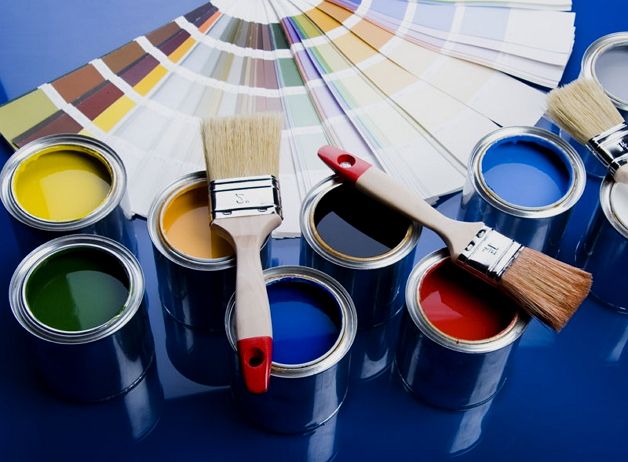
The palette of possible colors is enormous.
Here, the choice of shade will largely depend on personal preferences, the style of the balcony room or the room that is associated with the balcony. If it was decided to use several paints when decorating the balcony surfaces, then it is recommended to paint the room using no more than three colors. If it is planned to paint the outer part of the balcony, then it is highly desirable that its color completely coincides with the color of the facade of the building.
This is interesting: Options for finishing the balcony
Surface preparation and painting on the balcony
Proper preparation of surfaces for painting is quite important, since it largely depends on how smoothly and firmly the paint will lie, which means how beautiful your balcony will be and how long it will remain that way. But the preparation method may differ slightly for different materials. And now we will tell you how to prepare and paint surfaces made of concrete, metal, plastic and wood.
We paint the balcony
Concrete and brick
The surface needs to be cleaned of dirt and remnants of old paint; for this, various tools are used, ranging from simple sandpaper or a metal brush to a sander.In addition, there are special compounds that are applied to the wall or fencing to make the paint peel off more easily. If moss grows somewhere, clean the area with an alkali solution. All cracks and potholes must be filled with cement mortar or at least putty, so you will not only get beautiful smooth walls and a parapet, but also protect them from destruction. The leveled surfaces are primed. When everything is dry, you can paint.
Metal and plastic
Metal sheets are a very even and durable coating, but if initially the material was taken inexpensive and not of very high quality, then rust may appear on it. The surface to be treated must be thoroughly cleaned from it, as well as from dirt, oil stains and remnants of old paint, and then varnished. A special metal primer will improve the corrosion protection of the coating. Plastic panels are also best cleaned before painting. To do this, they must be removed, treated with a solvent or alcohol and installed back. And also to varnish.
Balcony after painting
Lining
Lining is a fairly popular finishing option. But wood is less resistant to various weather conditions than other materials. Therefore, it is imperative to use protective equipment here. As in other cases, surface preparation for painting begins with cleaning, that is, removing dirt and old paint, for which a brush with stiff bristles is usually used. If the wood is darkened in some places or damaged by fungus, use a special bleach designed for wood. Finally, the surface is covered with a primer (you can add color to it in the color of the main coating), and after that the lining is ready for painting or varnishing.
Wooden frames
For frames, the quality of the paint and good surface preparation are of particular importance, since, firstly, they are most exposed to rainfall and other weather conditions, and secondly, they are more difficult to paint, especially if the glazing has blind sashes. The latter will have to be dismantled for high-quality preparation and painting, and after completion of the work, they will have to be carefully installed in place. Thoroughly clean all surfaces, cover twice with linseed oil, and then with a primer. If it turns out that the frame has become uneven over time, you need to fix it with a putty (but with a layer of no more than 2 mm), if necessary, apply a second layer after the first has dried, then prime again. Now you can paint.
What color will be best for the balcony
A balcony is a place of rest for a person: it can be assumed that this is a different world - a world of tranquility and relaxation. Now imagine acid-bright colors in this world. Doesn't fit? That's right: the balcony needs light and gentle tones, among which it will be convenient to relax or just dream. So, the most suitable color for the balcony is blue. According to research by psychologists, blue is able to relieve tension, relax and tune in to positive emotions. If you want to give up classic white or light wallpaper, then your choice should definitely fall on blue.
For example, the main wall can be painted in a darker shade, and the adjacent ones can be made lighter. Moreover, you can make the walls lighter, depending on the distance from the main wall: your family and guests will be able to appreciate it.
The balcony is an integral part of a residential apartment, therefore, when carrying out repairs, one cannot but pay attention to its interior decoration. From the point of view of functionality and ease of implementation, the most suitable type of interior decoration for a balcony is painting its walls and ceiling with exterior compositions
At the same time, you should know that you can paint not only bare walls, but also elements of interior decoration, if they have already been installed, but for some reason their color does not suit the owners of the apartment, for example, plastic panels, wooden lining, etc.
Surface preparation
Before applying the paint, its surface must be carefully prepared. The technology for preparing the working area and carrying out repair or maintenance work will be presented below.
If you are carrying out maintenance work, then the floor near the workplace should be covered with old newspapers.This will keep surplus building materials from getting onto the clean surface, saving you unnecessary work and additional rebuilding costs. Masking film can be used to tighten the rest of the walls and ceiling if the work will be carried out with only one wall.
The first stage includes a thorough examination for damage that could appear during its operation or over time, defects that could appear in the process of its construction and plastering. For the best definition of all unpleasant nuances, before this, the wall must be thoroughly washed with a special washing machine under pressure. If you don't have a car, soapy water and a stiff brush will do. With the help of it, all cracks clogged with dust will open, which will then need to be repaired.
Prevention of flaws on the walls inside the premises is carried out with gypsum plaster without the addition of cement, if the work is carried out outside, then for this you need to use a liquid sand-cement mortar (it has significantly higher performance characteristics). Erasure of defects is carried out with a trowel, a trowel of a suitable size or a soft construction brush. The alignment takes place flush with the wall, so that no protrusions appear, which in the future will violate the aesthetics of the last layer.
There are times when the wall is very old or built with significant deviations in technology. During operation, very deep defects could appear on it, which cannot be eliminated by carrying out preventive work. In this case, it is advisable to completely cover with a layer of plaster. For this, a reinforcing mesh (polymer or metal) is attached. It can be fixed with dowels, glue, or the same mortar with which you will plaster. This will allow the plaster to hide any flaws in the concrete wall underneath.
Painting a balcony finished with clapboard outside
Usually, it is recommended to sheathe balconies outside with pine wood. It is the resin emitted by such wood that is an excellent natural antiseptic and provides the tree with protection from moisture, mold and mildew. We will not get such properties from a material made from deciduous trees. If your loggia is not finished with pine clapboard, do not be upset. After all, even the resin will not be able to completely protect such a finish for a long time from all kinds of natural phenomena and the effects of the atmosphere. Paint, varnish, impregnation - all those friendly comrades for painting balconies with finishing from any kind of lining. In order for the lining to be painted with better quality and its service life to best meet your requirements, time and external influences, it is necessary to take into account some secrets.
Before painting, the lining must be properly cleaned. This is done with a brush with steel or very stiff bristles. In the event that the wood is damaged by fungus or darkened in some places, we bleach it with special bleaches for wood. The primer is done either before painting or before varnishing. All of these products can also be found in specialized stores. Tint the primer to the color of the selected paint
Pay attention to the ends of the lining. Apply several coats of primer and the same amount of varnish on them.
The next stage - painting - is carried out at your discretion: with a brush, roller or spray gun. Two thin layers will suffice. It is recommended to paint a balcony made of lining only in calm, cloudless and warm weather, but not at high air temperatures outside. Different means for painting the lining are used: acrylate and oil paints, acrylic aqualacs, alkyd varnishes, top antiseptics.
Acrylate paints retain their color and shine for a long time, are flexible, and adhere perfectly to the surface of wood. The lining painted by them is able to breathe, does not become covered with cracks and resistant to moisture, steam and other whims of nature.
Oil paints are well absorbed by wood. They are also moisture resistant, but, unlike acrylate ones, they lose color faster and dry for too long after application. It is worth saying that after painting with oil paint of a very bright or dark color, the lining will quickly lose its external gloss and beauty.
Which paint to choose?
The choice of paint for the balcony depends on what you want to paint
Another factor to look out for is the type of finish you will be using on your balcony. You can buy quality acrylic paints, or you can buy traditional oil paint
The main thing is that the paint is intended for facade or outdoor work and is intended specifically for the type of surface that you have on the balcony. Also, an important parameter of the paint will be its frost resistance.
In general, it is recommended to buy paint from brand stores that carry paint directly from the manufacturer. This will give you some assurance that the paint will be of good quality.
You can also take alkyd enamel for painting the balcony. Such enamel, although a little more expensive, but they are of high quality, fit well on the surface and easily withstand our weather conditions.
In order to paint the concrete fence on the balcony, you need to prepare the surface. To do this, you need to clean up the dirt and repair any damage. If there is moss on the fence, then it must be coated with an alkaline solvent. Old paint that falls off and flakes must be cleaned off. Before as to start painting make sure it is dry and not too hot.
If your balcony is finished with plastic panels, then it is recommended to first remove them and wash them from dirt. To do this, you can use a nitro solvent or alcohol. To paint the plastic panels, you need to use varnish. When choosing a varnish, it should be borne in mind that dark colors are hotter in the sun, which can warp the panels. The easiest way is to apply the varnish with a paint sprayer. If not, then you can use a roller. The main thing, when applying, is to try to achieve a uniform layer.
If your balcony is clad with aluminum or steel, then there will be no big hassle with it. Before painting, you need to clean up all rusty areas with sandpaper. Oil stains can be washed off with a solvent. It is recommended to wipe the metal completely with a solvent so that the paint better adheres. After that, the metal must be covered with a special primer. Any enamel or varnish will fit well on the ground.
Interesting: Foundation with grillage
Features of painting various materials on the balcony
The choice of paint will largely depend on what materials the balcony is made of or what its surfaces are lined with. Let's highlight the most common cases:
Brick. Before painting a brick and a brick wall, the surface must be carefully and correctly prepared. First, with a spatula and using metal brush with all dirt and defects (irregularities, potholes, mortar residues) are removed from the surface. To give the surface an attractive appearance, the seams can be additionally treated with a putty. Brick is also required to be treated with antiseptic compounds. In the event that the brick already contains traces of mold or mildew, then all detected areas must be covered with a suitable alkaline solution. Upon completion of the preparatory work, it is required to prime the surface with an acrylic emulsion. It is best to paint the brick using a water-based paint designed for outdoor use. It is not recommended to use oil paints on poorly insulated balconies, because they do not have sufficient vapor-permeable characteristics and can provoke condensation. Water-based paints are always white, and the required shade is given to them with the help of colors.The brick can be easily processed with water-based paint, without worrying about its safety, because such compositions are completely non-toxic.
Concrete base. The concrete wall must be prepared in the same way as the brick: we clean it from the old paint, remove the dirt, level it with a putty. If there are traces of mold, then they must be treated with an alkaline solution. Immediately before applying the paint, the concrete surface must be primed. For concrete, silicate or plastic paints are perfect. When painting the surfaces of the balcony outside, you need to choose the same color as the wall of the building, so as not to stand out too much from the rest, which often leads to negative consequences and complaints from neighbors. Any color can be chosen for the interior painting of the concrete surface (it all depends on the preferences of the owner and the general style solution, since it is not worth making a sharp contrast with the interior room).
Lining and other wooden surfaces. Many do not know how to paint the lining on the balcony, because they are sure that, in principle, it is wrong to paint wooden surfaces. But you can paint without any fears and difficulties using ordinary acrylic paint, which is easy to apply on a wooden surface or brick, is completely environmentally friendly, and has excellent decorative characteristics. By and large, wooden walls can also be treated with a simple oil paint, which will do a good job of protecting the material from moisture. Regardless of what color and type of paint was chosen, it is necessary to paint with soft brushes.
Drywall. As a material for finishing, drywall has a number of advantages: ease of installation, light weight, environmental friendliness, non-toxicity, creating a perfectly flat wall surface. But the material absorbs moisture well, so the choice of paint and varnish composition must be approached very responsibly or use moisture-resistant drywall for finishing. Before painting, the wall can be treated with cement filler and primed. Experts note that water-based paints mixed with color are well suited for drywall. In addition, designers talk about the need to use matte shades of paint, because they are able to hide all the imperfections of the wall, while glossy compositions, on the contrary, will highlight them. Drywall painting can be done with a roller. The paint, regardless of which color was chosen, must be applied in several layers (the first layer must be applied horizontally, and the second one vertically).
The most important thing in painting a balcony is a combination of environmental friendliness and practicality.
Modern interior designers actively use balcony loggias as an independent thematic room. They successfully organize a workplace or a rest room. The main thing is to decide on the style and decide in what color to paint the balcony.
Before painting the balcony inside with our own hands, let's figure out the pros and cons of finishing work and talk about how to paint it technologically correct.
How to choose the right coating
Any paint is suitable for finishing the balcony. Do not forget that the loggia is not heated and the temperature difference on it, especially in the northern part of Russia, is striking. During rains and in spring, condensation can form on the walls, which will quickly render the paint unusable. The balcony will have to be repainted every year. To prevent this from happening, a special paint is selected for external or facade work.

According to their composition, paints for facade works are divided into groups:
- Water-based coating. For outdoor use, it is used with silicone or latex additives. The paint dries quickly, has no unpleasant odor, is inexpensive, has a wide variety of colors, and is easy to apply.Of the minuses, fragility stands out and if the composition is incorrectly selected, then rapid fading.
- Alkyd enamel. Of the advantages, high water-repellent and protective properties stand out. The surface covered with alkyd paint has a glossy sheen and looks attractive. Of the minuses stand out: low vapor permeability and a pungent odor. It is possible to apply a coating on the walls of a glazed balcony only in summer, when the room is well ventilated.
- Oil based paint. Of the advantages, high waterproofing of the walls, is not afraid of direct sunlight and large temperature drops. But it is not recommended to use an oil-based coating for bricks and concrete, as the film will prevent the material from breathing and the room will quickly succumb to mold and mildew.
Important!
When decorating on a loggia, it is necessary to paint not only walls, but also other interior elements. It is better to use different compositions for painting the walls and the wooden frame and the front door.
Colors are selected either close in contrast or in harmony with each other. Do not forget that any loggia is part of an apartment or house. Therefore, its design is also important.
Answering the question of how to paint the walls on the balcony, we recommend readers to use water-based emulsion; for an open loggia, an alkyd one is suitable, as in the photo below.
Photos are enlarged, click!
Balcony preparation for painting
If brick walls are not properly prepared for painting, the coating will lie unevenly, highlight all defects, and quickly become unusable. Proceed in stages:
- Examine the masonry surface carefully. If cracks are present or the seams between the bricks are delaminated, they must be cleaned and re-treated with cement mortar. Remove old whitewash / paint residues with solvents.
- Remove all dust, crumbled cement and dirt, otherwise bumps, streaks, and unsightly stains will form during painting. The masonry can be vacuumed and then washed with soapy water using rags and a brush.
note
Efflorescences are often formed on brick walls - cloudy spots of white, yellow or gray. They signal an increased level of humidity inside the walls.
Under the influence of the sun, moisture from the bricks evaporates, and the salt crystallizes in the form of deposits. Treatment of the wall with special inhibitors will help get rid of efflorescence. Salting cannot be ignored - they destroy the masonry.
- Before painting, treat walls with a latex or acrylic primer (depending on the type of paint). It will prevent the formation of fungus, improve the adhesion of the coating. The impregnation is applied in 2-3 layers with a thickness of 2 mm. If greasy stains remain on the masonry, prime them with several additional coats.
- If the masonry is relatively fresh or had to deal with salinity, use water repellents. These impregnations are water-repellent - when dry, a thin silicone film forms, which closes the capillaries in the brick and prevents moisture from penetrating into the depth.
Wall treatment with hydrofiber
Water repellents will act as efficiently as possible if the walls are treated with inside and outside.
Painting various types of surfaces of balcony rooms
Common materials for unfinished balcony walls are concrete in panel houses, brick in masonry or plaster. Later, homeowners decorate the walls on the balcony with wood, plastic or metal covering, use drywall, wallpaper, ceramics, natural or artificial stone.
Painting plasterboard materials
Drywall installation technology includes sealing the joints of sheets and holes after fastening with self-tapping screws. Then the sheet is completely covered with putty and rubbed with abrasive materials until a smooth and even surface is obtained.You will have to paint a putty and primed sheet, for these purposes it is better to use water-based dyes, the best choice of which is acrylic or water-based paint.
Rice. 6 Alkyd paints - properties
Usually the painting is done in two or more layers, the last layer is applied in the direction of the light.
Painting of concrete, brick, cement plaster
It is better to cover a concrete or brick wall on the balcony with paint for facade work, you should choose from: acrylic, silicone, silicate, latex.
Finishing the balcony for painting includes surface cleaning, treatment of moldy areas with alkaline solutions, and a primer.
Rice. 7 Wood dyes
Concrete and brick materials have a high degree of roughness, and deep seams are located in the brickwork - in this case, it is better to choose brushes for painting that can penetrate deep pores.
Painting wooden surfaces
Chipboard or fiberboard boards, wooden floor or lining are painted after surface preparation; linseed oil or oxol is the standard primer material. A more modern method is the use of an alkyd primer GF-021 on foam lacquer (GF-021 has low absorbency, therefore it is not designed for processing porous materials).
You can paint wooden surfaces using any color of dye or transparent varnish, the most effective are alkyd-based paints and varnishes, the budget option is to use obsolete oil dyes with a long drying time. It is better to apply paint with a mohair roller or brush on a rough porous surface.
Profile sheet - materials for painting
Rice. 8 Paints for metal
Usually, a profile sheet with traces of corrosion is painted after a long service life (10 - 15 years) - this is easier and cheaper to do than to dismantle the old coating from the inside and install a new one. Traces of corrosion are removed with sandpaper, rust converters can be used.
Ordinary processed metal is painted with alkyd, polyester or epoxy-polyester materials, which perfectly tolerate high and low temperatures, high humidity.
Coloring plastic
Quite often, plastic in exterior and interior decoration with siding or panels fade in the sun or decomposes over time, losing its appearance. It can be painted with a special paint for PVC plastic products, sold in cans (Maraplan, Rainbow-180, Gamma, luminous Akmilite).
Rice. 9 Paint for plastic sheathing
When deciding which paint to paint the balcony inside, you should give preference to harmless water-based materials (acrylic, water-based emulsion), the type of paint chosen should match the material to be painted. Paint balcony or loggia do not present any particular difficulties with your own hands, when carrying out work you should be guided by the basic rule - apply paint in at least 2 layers, the finishing layer should be located parallel to the luminous flux.
When carrying out almost all painting works, a roller is used, the structure of its surface must correspond to the material being processed - fine-mesh foam rubber or rubber for smooth plastic or metal surfaces, mohair or fur coat for porous wood-based panels, concrete and brick materials.

